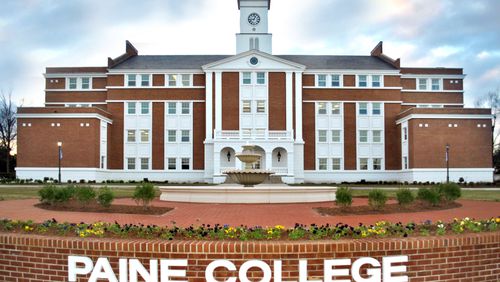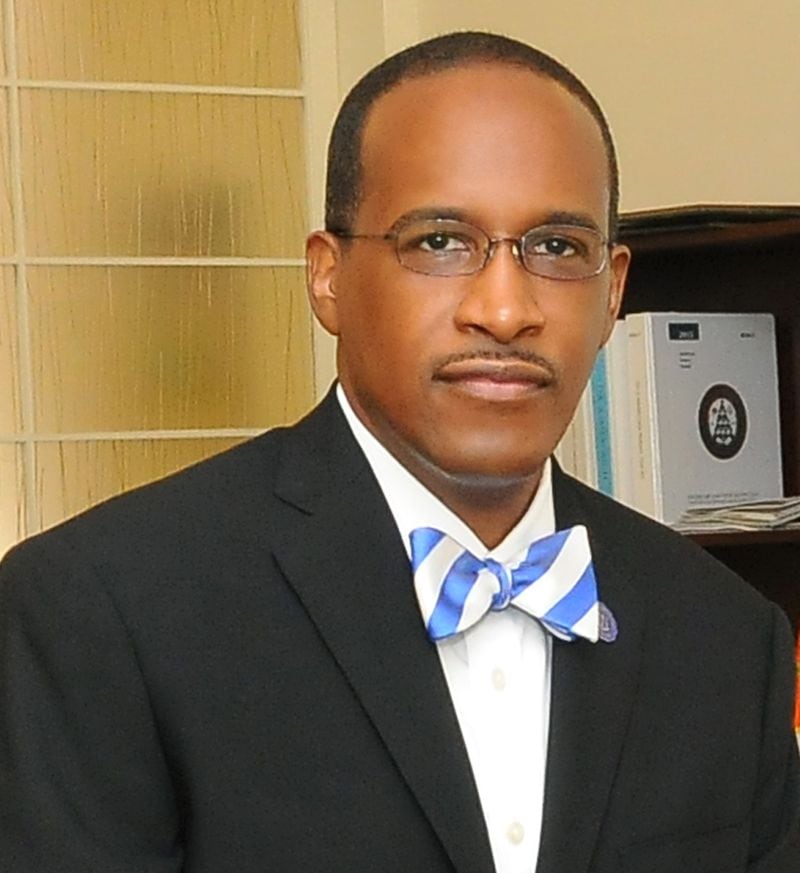The AJC's series on Historically Black Colleges and Universities is drawing a lot of comments, including a response today from the president of Dillard University in New Orleans, Walter M. Kimbrough.
An Atlanta native, Dr. Kimbrough was his high school salutatorian and student body president in 1985, and went on to earn degrees from the University of Georgia, Miami University in Ohio, and a doctorate in higher education from Georgia State University. He has worked at Emory, Georgia State University, Old Dominion University, and Albany State University in 2000 where he became the vice president for student affairs at the age of 32. In 2004, at the age of 37, he was named the 12th president of Philander Smith College. In 2012, he became the 7th president of Dillard.
The AJC series by AJC reporters Eric Stirgus and Ernie Suggs uncovers some sobering trends among HBCUs, as this excerpt shows:
Tiny Paine College in Augusta has lost 46 percent of its enrollment since 2010, and two-thirds of Paine's freshman class in 2015 didn't come back for sophomore year. Meanwhile, the oldest HBCU in America, Cheyney University of Pennsylvania, lost 55 percent of its enrollment during that period. Its six-year graduation rate in 2015? Seventeen percent. At South Carolina State University, enrollment declined 30 percent and core revenue 27 percent.
Colleges can't sustain those kinds of numbers for long — evident in the fact that at least six HBCUs have closed since 1988 and at least two (including one in Atlanta) are now colleges in name only. Some college finance experts predict that dozens of HBCUs will disappear in the next 20 years.
Kimbrough says the data highlighted by the AJC need context, and he seeks to provide it in this guest column.
By Walter M. Kimbrough
Two men go visit the doctor. As part of their biometric screening, they each are weighed, one at 180 pounds, the other 200 pounds. Provided with only this information I doubt you would be willing to make a definitive statement about the health of either man. Further you would not make a declaration whether either man was overweight.
To do that, we would want to calculate his body mass index, a height-weight ratio commonly used to determine obesity. The man who weighs 190 pounds is 5’5”, the man who weighs 200 pounds is 6’5”. The first has a BMI of 31.6; he is obese. The second has a BMI of 23.7; he is considered of normal weight.
Credit: Maureen Downey
Credit: Maureen Downey
We understand this. While one man is heavier than the other, because he is taller he is a healthier weight based on BMI. Height is just one factor but provides more data to make an informed assessment. We would also ask about family history, blood pressure, glucose levels, etc. for an even better health assessment.
Higher education institutions are complex entities. Colleges and universities are made up of diverse people who bring their ever-changing lives to campus, and those experiences impact how they progress through college. More specifically, a student who enters college generally brings with them at least eighteen years of life that has shaped them, and during their college experience not only will their past impact progression, their present will as well.
Despite these facts, people continue to look for a simple metric of success of a college. The recent AJC series on Historically Black Colleges and Universities highlights the faulty conclusions reached when we use one number without any context to determine quality.
Graduation rates.
In 2006, the National Center for Education Statistics released a report to place graduation rates in context, where they looked at graduation rates by the percentage of the student body that was Pell eligible: small was less than 20 percent moderate 20-40 percent, and large greater than 40 percent. Pell grant students, those who come from families that generally earn less than $40,000 a year, are much more vulnerable to life happening to them, which can detour or even derail their collegiate pursuits.
Simply stated, when a student from a family earning $200,000 has car trouble, the family gets the car fixed, even using a rental if needed. When a student from a family earning $20,000 has car trouble, it means mom has to take other means to get back and forth to work and the student leaves school to either work or take care of younger siblings to compensate for longer commute time by mom.
As a sector, 60 percent of HBCU students are Pell eligible, so I broadened the analysis by adding an extra-large category, 60 percent Pell and above. Using the 2014 graduation rates, small Pell population schools averaged an 80 percent graduate rate, moderate 57 percent, large 43 percent, and extra-large 32 percent There were 160 colleges and university where over 60 percent of their student body received the Pell grant; 61 of those schools were HBCUs.
Those 61 represent roughly 75 percent of all four-year HBCUs. Restated, three out of four HBCUs have student bodies where at least 60 percent of the students are low-income, and the average graduation of all schools (most of them predominantly white) where more than 60 percent of the student body receives the Pell grant is 32 percent.
But if we must use graduation rates, let's add factors to provide a fairer analysis; let's add height to the weight. For example, the 2014 Georgia Southern University graduation rate was 51 percent, while the rate at Albany State University was 40 percent. Georgia Southern is 39 percent Pell; Albany State is 72 percent. The graduation rate for Pell populations like Georgia Southern is 57 percent, meaning their rate is about six points below average. The graduation rate for Albany State's peers is 32 percent, meaning they over-perform by eight points.
HBCUs do the heavy lifting, often educating the most financially fragile members of our community. The graduation rate is rarely a measure of quality of the institution or ability of the student. Without factoring in the life factors that often take precedence over being in school, using graduation rates to imply quality is unjust and even cruel.
Just like we don’t use weight alone to come to a conclusion about our health, we should not use graduation rates alone to determine the worth of a college. If you start to factor in life, you might be surprised that some schools thought to be underperforming or even failing are actually much healthier than those with a higher rate.
About the Author








